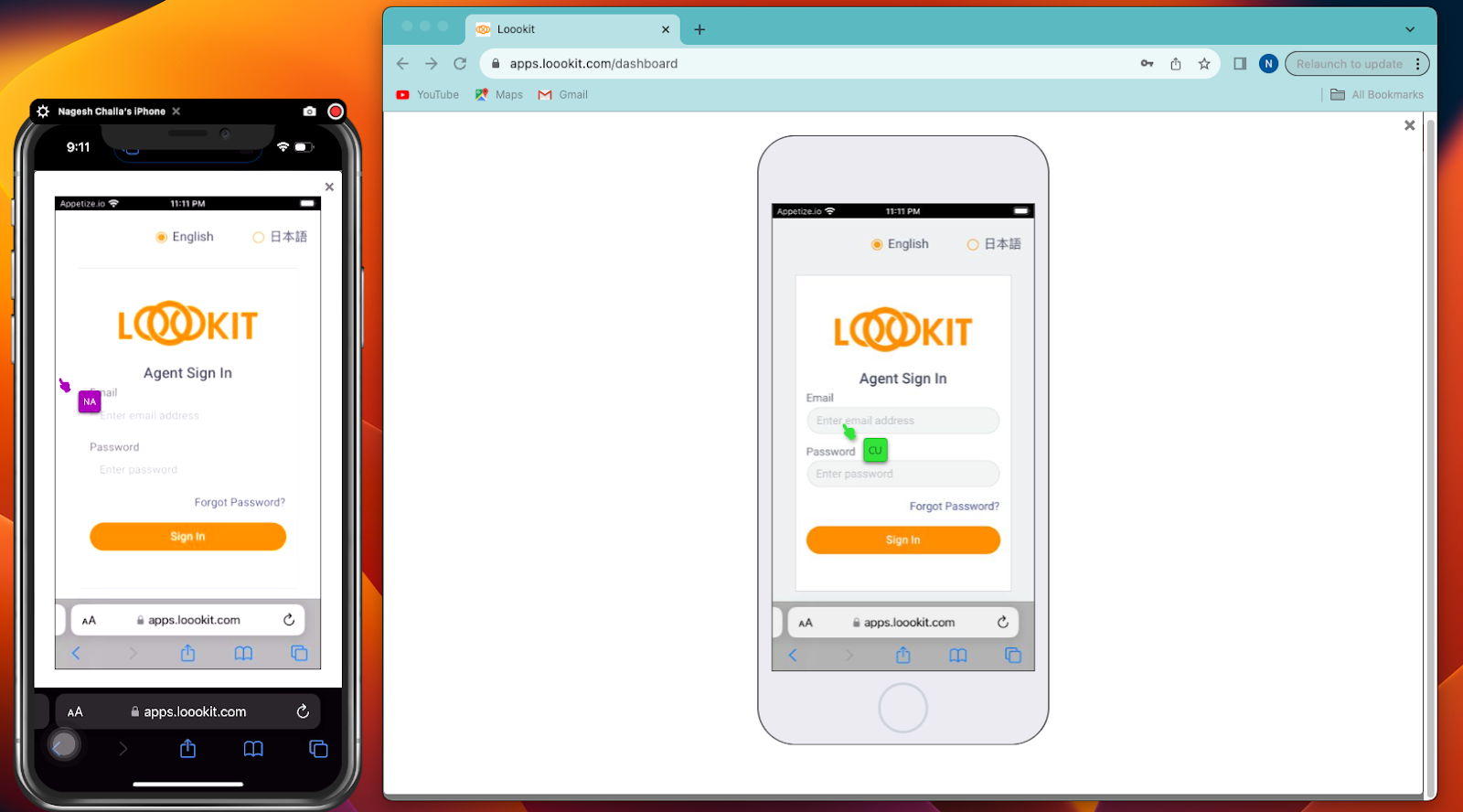Mobile apps have transformed how businesses engage with their customers, providing a wide range of services and products in an accessible way. They cover various sectors like healthcare, food delivery, e-commerce, finance, and entertainment, seamlessly integrating into our daily lives.
However, as mobile apps offer increasingly advanced, beneficial features and functions, they also bring unique challenges. This increasing sophistication causes users to encounter questions and hurdles during their use. This is especially the case with settings and features that involve privacy and location-based preferences or when apps interact with external devices like wearables, smart home sensors, and office automation tools.
That’s why addressing privacy concerns and solving app-related challenges for users has become a crucial part of customer support. And handling them effectively helps boost customer satisfaction and increase engagement, benefiting both users and the companies behind the apps.
A Game-Changing Approach to Customer Support
Customer support teams use various tools like live chat, email, phone support, in-app tutorials, and video guides to help users understand how to use the app. However, these tools often cover general usage and might not offer solutions for specific issues users face.
An ideal solution would be to provide users with in-person guidance, ensuring their problems are resolved immediately. The next best option is a remote but live “meeting” where a help desk agent can visually assist users through their specific issues. Waagu has developed this innovative solution by utilizing Appetize’s mobile streaming technology and the Loookit visual assistance platform.
Introducing Loookit
Loookit is a proven Remote Visual Assistance service from Waagu Inc. With No Apps or Downloads, Loookit delivers advanced digital customer support capabilities to businesses of all sizes.
Along with standard Audio/Video features, here are some Key differentiators in Loookit:
- Smart Triggers – QR Codes and links for inbound contact, among others.
- Train and Assist customers to use Mobile Apps
- Visual support with AR – share camera views for live visual assistance
- Live Document Share – jointly view and markup documents.
- Location – share location and route maps.
- Images – view images & annotate jointly.
- Easily add Secondary Devices to a meeting.
- Work with AR devices & smart glasses
- Multiple Languages – available today in Japanese & English.
The figure below shows a Loookit interaction. With its OneView approach, Loookit allows the host/ help desk agent to control the different features during a meeting, simplifying the customer’s participation.
A Case Study: How Loookit and Appetize Transformed Customer Support
A health insurance company, offering incentives for maintaining healthy habits tracked via a mobile app, faced significant challenges in assisting subscribers with app navigation. Traditional support methods like voice calls weren’t sufficient for offering detailed, real-time guidance.
The integration of Loookit and Appetize offered a groundbreaking solution that allows agents to co-navigate the app with users. This development improved user experience and increased app engagement.
Exploring Alternative Solutions
To discover the most effective customer support solution for mobile apps, Waagu considered various alternatives before choosing to integrate Appetize’s mobile streaming technology with the Loookit visual assistance platform. Each alternative had its advantages and drawbacks.
Screen Recording
Screen recording, as a potential solution, was initially attractive due to its straightforward concept: users could record their interactions with the app and send these recordings to support agents. This method promised a clear view of the issues faced by the user. However, in practice, this approach revealed significant drawbacks.
Complexity for Users: Many users found the process of recording and sending a screen recording inconvenient. This was particularly true for less tech-savvy users who were not familiar with screen recording functions on their devices.
Privacy Concerns: Screen recordings could potentially capture sensitive information, raising privacy concerns. Users were often hesitant to record sections of their app usage that contained personal data.
Time-Consuming Analysis: For support agents, analyzing screen recordings was time-consuming, as they had to watch entire recordings to identify and understand the issue, delaying the resolution process.
Screen Sharing via Companion Apps
Another alternative Waagu considered was screen sharing through companion apps. This method would allow support agents to view the user’s screen in real-time. While promising in theory, it had its limitations.
Additional Downloads: Requiring users to download another app just for support purposes was a significant barrier. It added steps to the support process, making it less user-friendly.
Compatibility Issues: Companion apps often face compatibility issues with different devices and operating systems, leading to inconsistent support experiences.
Resource Intensive: Maintaining these companion apps required additional resources from the company, both in terms of development and support.
App Instrumentation for Screen Sharing
They also explored App instrumentation for screen sharing. This method would involve integrating screen-sharing capabilities directly into the app.
Development Effort: This approach required substantial development work to embed screen-sharing functionalities within the app. It posed a challenge in terms of allocating developer resources and time, which could otherwise be used for enhancing the app itself.
Performance Impact: Integrating screen-sharing capabilities had the potential to impact the performance of the app, making it slower or less responsive.
Security Concerns: Embedding such features raised security concerns, as it could potentially create vulnerabilities within the app.
Emulation of the Target Application
Initially, the idea of emulating the target application faced its own set of challenges, particularly in enabling simultaneous operation by agents and users.
Technical Complexity: Developing a system that allowed both support agents and users to interact with an app simultaneously in a cloud environment was technically challenging. It required sophisticated programming and infrastructure.
User Experience Concerns: Ensuring that this interaction was smooth and intuitive for users was crucial. Early versions faced issues with lag and synchronization, impacting the user experience.
Scalability: Scaling this solution to accommodate a large number of users and a variety of apps was another significant challenge that needed to be addressed.
Despite these challenges, the integration of Loookit and Appetize emerged as the most viable solution. The combination of these technologies successfully addressed the issues that other alternatives presented.
Overcoming Technical Challenges: Through persistent development efforts, the technical challenges of mobile streaming were overcome. This resulted in a seamless and synchronized experience for both agents and users.
Enhancing User Experience: The final solution offered a user-friendly interface, making it easy for users to engage with support agents without needing technical expertise.
Scalable and Secure: The integrated system proved to be scalable, catering to a large user base and a variety of apps, while maintaining high standards of security and privacy.
As you can see, while each option had its benefits, they also came with notable downsides in complexity, user experience, and resource demands. The decision to integrate Appetize’s mobile streaming tech with the Loookit platform stemmed from these factors. And resulted in crafting a solution that not only tackled users’ immediate needs but also raised the bar for mobile app customer support.
This choice also highlighted Waagu’s dedication to innovation and user satisfaction, ensuring their support system stays effective, user-friendly, and adaptable to the ever-changing mobile tech scene.
Loookit & Appetize
By integrating Appetize’s mobile streaming technology into Loookit’s browser-based Visual Assistance platform, Waagu created a solution that allowed help desk agents to provide personalized, live assistance to solve the customer’s problem.
The solution involved:
- An executable copy of the application in the cloud using Appetize’s mobile streaming server.
- Enabling multiple parties to jointly operate the executable copy using Loookit’s co-browse server.
- Providing a rich communications capability with Audio/Video and messaging on the Loookit platform.
As a result, during a support call, the Agent can invite the subscriber to a Loookit Session in which both the customer and the Agent jointly operate the app using just their browsers.
Loookit Integration of Mobile App Streaming
Appetize’s App Steaming service allows native mobile applications, iOS as well as Android, to be uploaded and accessed over the web. This enables companies to use them for previews, training, and testing.
How do we take this stand-alone service and turn it into a co-browse style, on-demand functionality that can be simultaneously operated by multiple parties?
Loookit integrated a dedicated, app emulation-specific co-browse server that connects to the Appetize servers. The Appetize servers contain iOS simulator and Android emulator functionality.
While Appetize supports the mobile experience, Loookit’s Co-Browse acts as a proxy server that presents a unified interface to the Appetize mobile streaming server. When the mobile streaming feature is started in Loookit, it sends a new session request to the co-browse server and creates a meeting room connecting all the parties in a session.
Keyboard entry as well as synchronizing mouse movements, clicks, scrolling, etc. among multiple users are sent to the Appetize server. Appetize server responds to the control and commands originating from the participants by manipulating the app.
After performing the requested actions, the Appetize server sends the updated screenshots back to the browser to be re-rendered on the canvas.
The co-browse proxy server intercepts all incoming snapshots received from Appetize and broadcasts to all users within a session room. These images are then rendered on canvas in the Loookit app for all the users.
Similarly, all the user actions performed on the emulated app within Loookit are captured and then sent to the co-browse server. The co-browse server, in turn, sends these user actions to Appetize to be performed on an actual device.
Appetize performs these actions on the actual app and sends updated screenshots back to the headless browser in the co-browse server. These screenshots are then intercepted and broadcasted to all Loookit users in that session.
Using Loookit with App Emulation
The process of initiating a mobile streaming session within Loookit is as follows:
The agent starts a Loookit session with the customer using any of the following:
QR Code / Email Invite / SMS Invite or a Session Link
- The agent initiates the App Emulation function.
- The customer accepts the App Emulation request & permits data sharing.
- The agent can select the device type (iOS or Android), the OS version and the application version.
- The customer and agent see the same copy of the app running in their browser.
- The customer and agent operate the app as they would normally.
Both parties can see the “Mouse” pointer of the other party
Either party can navigate, select, enter, or edit information. Same as if they were operating the app locally.
- The agent can watch and guide the customer during this joint operation.
The screenshots in the following pages show the Loookit-Appetize solution in action. The view from a customer using a smartphone and an agent on a PC are shown simultaneously. The Apps used here are the built in Safari and Loookit’s web app.
Both parties are able to view and operate the apps and the agent is able to help the user navigate the app and provide live guidance.
Since the Appetize cloud-based mobile streaming technology maintains different devices and OS versions, the agent can easily select and match the device that the user has to offer them an experience closely resembling their own device.
In the above figure, you can see both the Agent’s screen on the right and the customer’s phone screen on the left. They can each see and follow the cursor movements of the other. And each of them can operate the device.
Results
After an internal assessment and a successful field trial involving real customers, the insurance company was highly satisfied with the Loookit+Appetize solution, seeing its effectiveness in solving a crucial issue.
With over a million users relying on the app for health monitoring, customers were encouraged to engage consistently and sought help proactively whenever they faced challenges.
Consequently, the insurance company found it pivotal to integrate this solution into their call center capabilities and deployed it as a key feature in 2022. After several months of usage, an internal user survey was conducted. Although we can’t disclose all the results, here’s a snapshot: of the 1,000+ respondents, satisfaction levels scored over 80%.
These results led the company to renew the solution for another year, while also doubling the call center agents with access to Loookit.
The Impact of the Integration
The collaboration between Loookit and Appetize is driven by innovation, efficiency, and a deep understanding of user needs to promote business growth through exceptional customer experience. Here’s how this solution helps achieve this goal:
Bridging Gaps with Real-Time Interaction
A significant aspect of this collaboration is the real-time, interactive support sessions. This feature transformed passive customer support into an active and engaging experience.
Users no longer endure long waiting times or automated responses; instead, they receive immediate and personalized guidance. This interaction builds trust and confidence, leading to deeper user engagement and satisfaction.
Benefits to Companies
This collaboration benefits companies in multiple ways. It reduces the workload on support teams, making problem resolution more efficient and lowering operational costs.
It also provides insights into user behavior and common issues, informing future app development. Furthermore, companies offering superior support are more likely to retain users and attract new ones in a competitive app marketplace.
The Road Ahead
Future advancements in customer support show great potential. Integrating technologies like artificial intelligence and machine learning could enhance support systems, making them more efficient and personalized. Expanding this model to other digital platforms, such as web applications and IoT devices, is also feasible.
Innovative customer support solutions that leverage real-time, interactive sessions like Loookit+Appetize come with an inherent edge over the more conventional approaches. They open new avenues for user engagement and business growth and offer companies what they need to thrive in the competitive landscape of the mobile app industry.
Extensibility for any solution
Appetize prides itself for being the most extensible platform around mobile emulators and simulators. Together with Loookit, we were able to provide an innovative, cutting edge solution that was uniquely tailored to their customers in a way that nobody else was able to deliver.
We enable any company in the world to build custom solutions on top of mobile emulators in the browser. From our APIs to our SDKs, we’ve focused on providing incredible versatility while still keeping things simple and intuitive.
If you would like to build or showcase one of your own solutions, please go ahead and try out Appetize with our online demo.
This article was originally posted on the Appetize Blog, visit to learn more.









